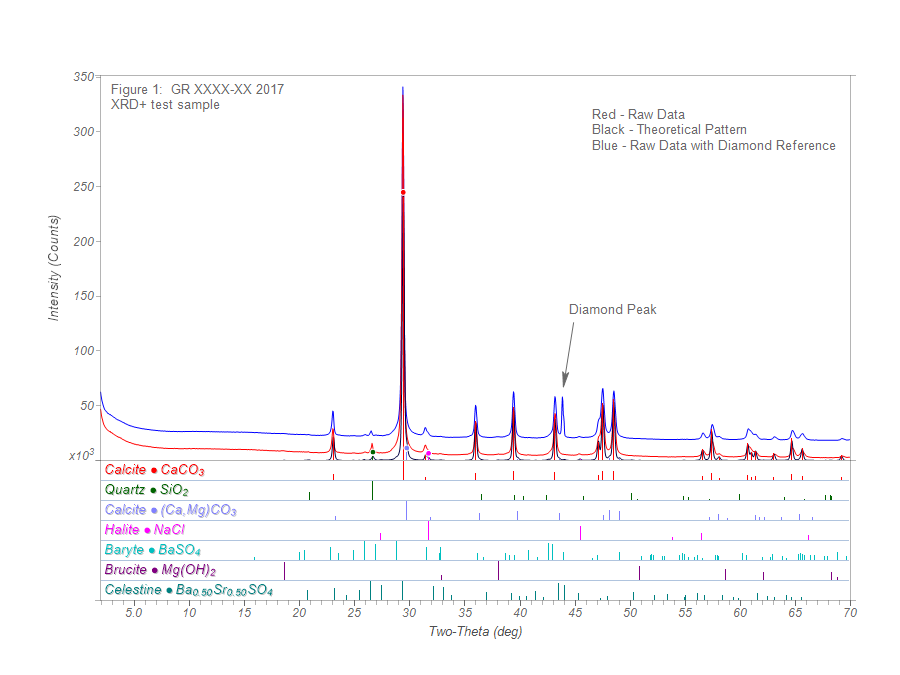X-Ray Diffraction (XRD) Analysis
X-Ray Diffraction (XRD) analysis determines the molecular structure of crystalline materials. Elemental Analysis could tell, for example, that a sample is rich in iron (Fe) and oxygen (O); however, XRD analysis will indicate which crystalline minerals the sample contains, such as FeO (wüstite), Fe2O3 (hematite) or Fe3O4 (magnetite).
We have a database with diffraction data for 400,000 inorganic and 525,000 organic materials.
XRD+
Ordinary XRD analysis only detects the crystalline portion of the sample. Non-crystalline (a.k.a. amorphous) material cannot be quantified with standard XRD analysis. XRD+ builds on XRD analysis to quantify the amount of non-crystalline material in the sample.

Sample Size
X-Ray diffraction is typically performed on powder samples, which we grind as part of the normal sample preparation process. Ideally one gram of the unknown material is available. However, with special sample preparation techniques we can perform XRD analysis on samples as small as a few milligrams.
Solid samples, such as metal coupons, can be also analyzed by XRD and EDS. These samples cannot be ground into a powder, and are tested non-destructively. Coupons with a surface of interest of up to a maximum size 1.0" x" 0.5" (25mm x 12mm) and no more than 0.45" (11mm) thick will easily fit in the XRD machine. Larger samples can be accommodated, please contact us to discuss your requirements.
